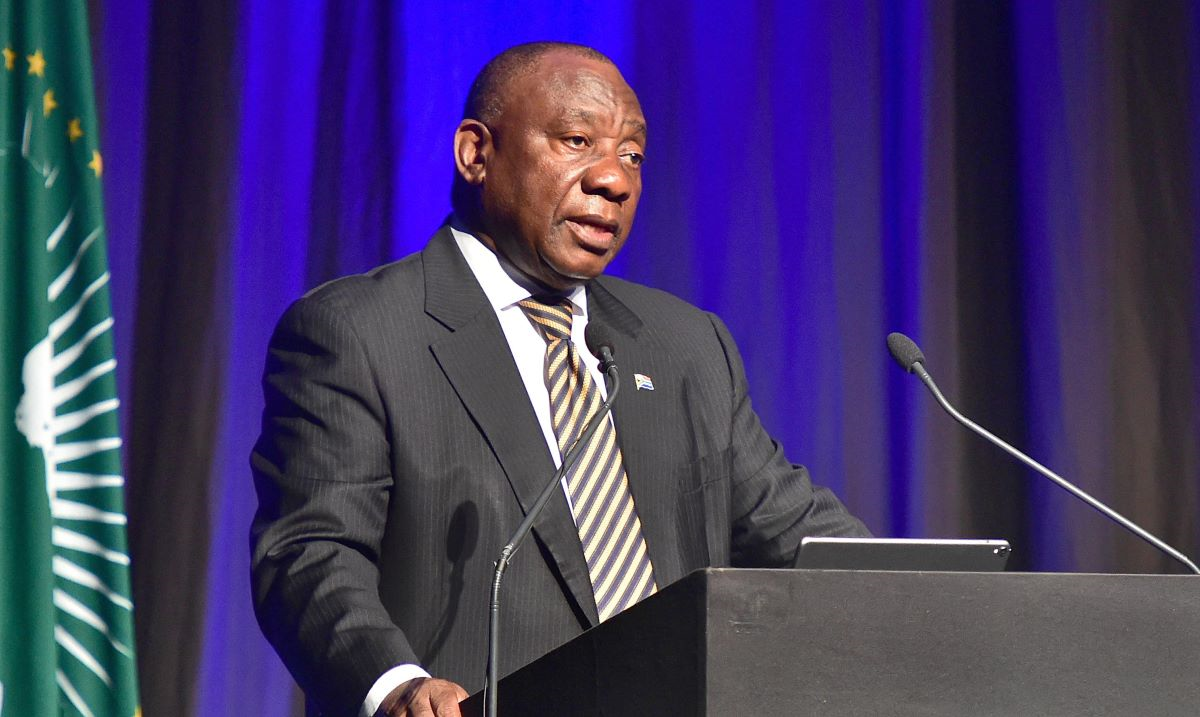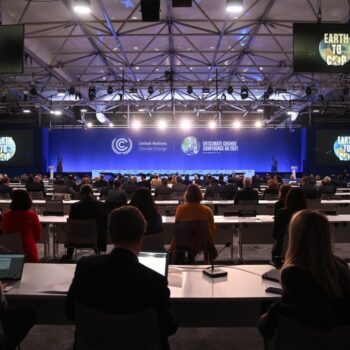Pre-COP Status: 🟠 COP26 Progress: 🟢 Post-COP Momentum: 🟢
The $8.5bn South African energy transition deal, coupled with multiple new initiatives aimed at retiring coal power plants, demonstrates the opening of a new chapter in the global energy transition – the accelerated retirement of the global operating coal fleet. These tools and financial commitments will be essential to ending the burning of coal in line with 1.5c pathways.
Accelerating the retirement of the global coal fleet is essential to keeping warming below 1.5c
Keeping warming below 1.5C requires an end to coal power by 2030 in the OECD, and 2040 in the rest of the world. Given coal power plant lifetimes are measured in decades, it has been clear for some time that there is no room in the global carbon budget for new coal. A below-1.5C world also requires the closure of every operating coal plant in the world.
Much of the OECD and EU operating coal fleet is ageing and closure by 2030 is already occurring (see our blog on phase-out progress here).
The challenge is greater for countries with younger coal fleets, particularly those outside the OECD. Power plant owners previously expected to continue operation until mid-century or beyond – well past the timeline required to keep warming below 1.5C. Early closure may have financial costs, discouraging urgent action.
More positively, there are already considerable economic headwinds to operating coal in countries such as South Africa, India, and Indonesia, which undermine arguments to keep coal running. However, a Paris-aligned pathway requires faster closures than market forces alone will deliver. This has given rise to the idea of ‘Coal Retirement Mechanisms’ (‘CRMs’) – tools, mechanisms and funds designed to accelerate the closure of coal plants. COP26 has been the launchpad for a range of new coal retirement initiatives, opening up new opportunities to accelerate the global transition from coal to clean energy.
Major South Africa coal transition partnership backed up by new tools and money on the table
The lighthouse announcement at COP26 has been the $8.5bn (US) partnership between donor governments and South Africa to speed up South Africa’s energy transition. The deal, formally announced in speeches by von der Leyen, Joe Biden, Boris Johnson and Cyril Ramaphosa, has been over two years in the making, with diplomatic outreach from the COP26 Presidency bolstered by efforts from Germany, France, the US and EU. The crucial next step will be developing a workplan to establish how and when funds will be disbursed, and how they will be spread across the accelerated closure of South Africa’s operating coal fleet, expansion of renewable energy capacity, improvements to grid infrastructure, and a just transition for workers and communities. As the first of its kind, the South Africa deal represents a potentially replicable model for other countries. Indeed both India and Indonesia, with their respective 233GW and 37GW operating fleets, have expressed an interest in similar support in the past week.
The South Africa deal will likely operate partially through another significant initiative, the Accelerating Coal Transition (ACT) mechanism of the Climate Investment Funds (CIFs). Following 13 initial expressions of interest, the ACT will start with a focus on South Africa, India, Indonesia and the Philippines, which are collectively 15% of global coal capacity. The ACT is currently capitalised to the tune of $2.5bn, including a newly announced $1bn from Canada, demonstrating donor recognition of the considerable financial support needed to deliver coal retirements at scale. COP26 also saw the launch of the Asian Development Bank Energy Transition Mechanism (ETM), a sister initiative to the ACT which aims to support Asia’s transition away from coal.
CRMs are a new frontier in the energy transition. Voices in civil society and beyond have rightly noted they must be designed extremely carefully to ensure they genuinely accelerate the retirement of coal assets, while ensuring that polluters aren’t paid to deliver outcomes that would have happened through market drivers anyway. Civil society organisations and local communities will also need to be involved in designing how these mechanisms work in practice. Indeed, managing the ‘moral hazard’ of rewarding polluters must be central to CRMs if they are to avoid being discredited. So it was encouraging to also see the launch of the Coal Asset Transition Accelerator (CATA) at COP26. This is a new initiative bringing together think tanks and philanthropy to undertake research and peer-to-peer learning, helping to provide expert insight and civil society scrutiny.
What needs to happen next?
- CRMs are a promising new tool for accelerating the transition away from existing coal assets, but will need to be carefully designed to deliver accelerated retirements while avoiding paying polluters for already-inevitable action.
- 2022 will need to provide clarity on the South Africa partnership and actions flowing from the initial CIF and ADB CRMs, informed by the work of CATA and others. This should be reflected in proactive engagement of civil society groups in partner countries such as Indonesia, India, Viet Nam and Philippines.
- Achieving rapid coal retirements and clean energy deployment in line with a 1.5C pathway will also require significant (i.e. trillions of dollars) new financial commitments. Governments, multilateral and bilateral institutions and private actors will need to develop the means to mobilise and disburse these funds through 2022 and beyond. The incoming German G7 Presidency will be an important venue to advance this.
Stay tuned for an E3G blog series on CRMs in the coming weeks.


